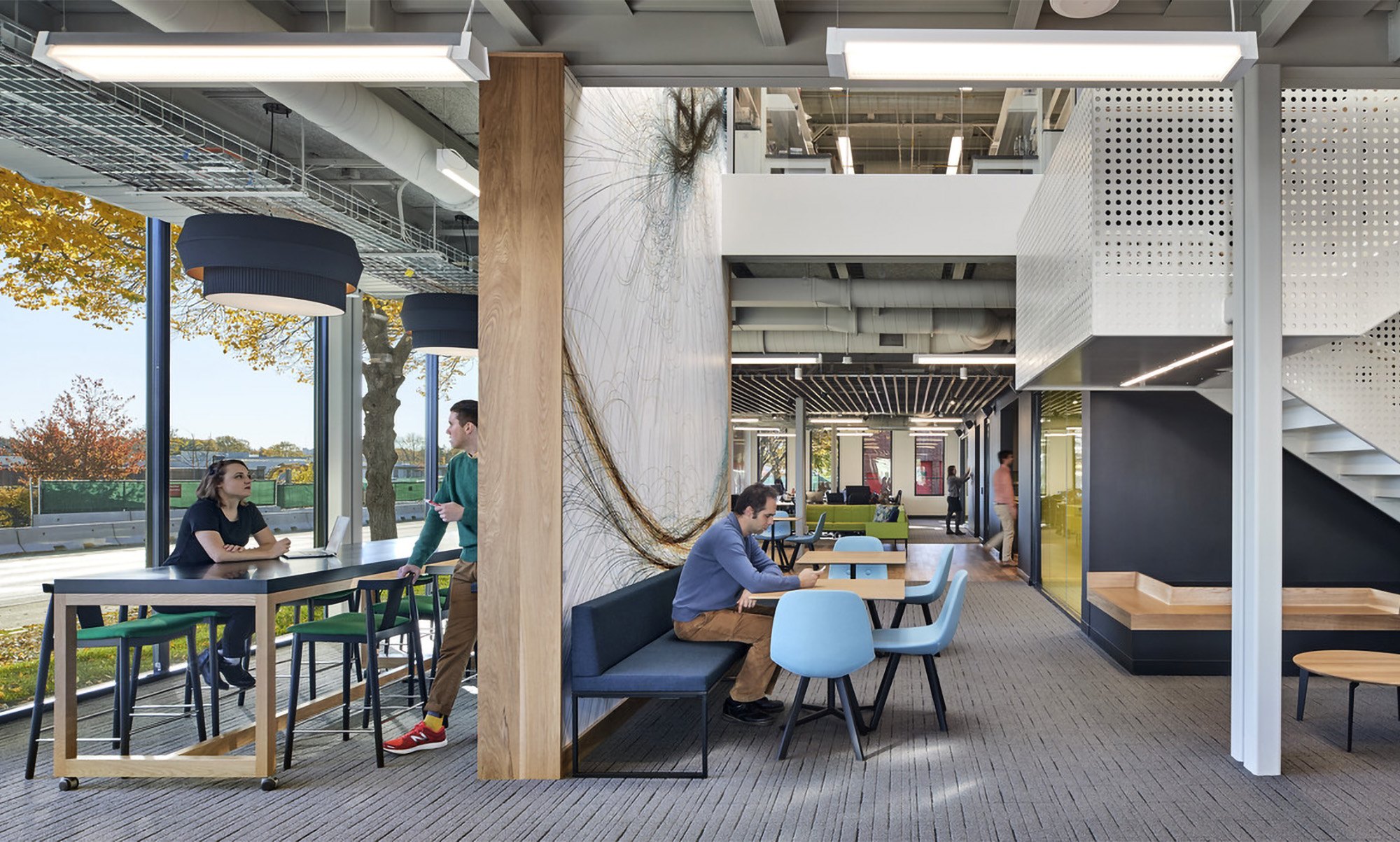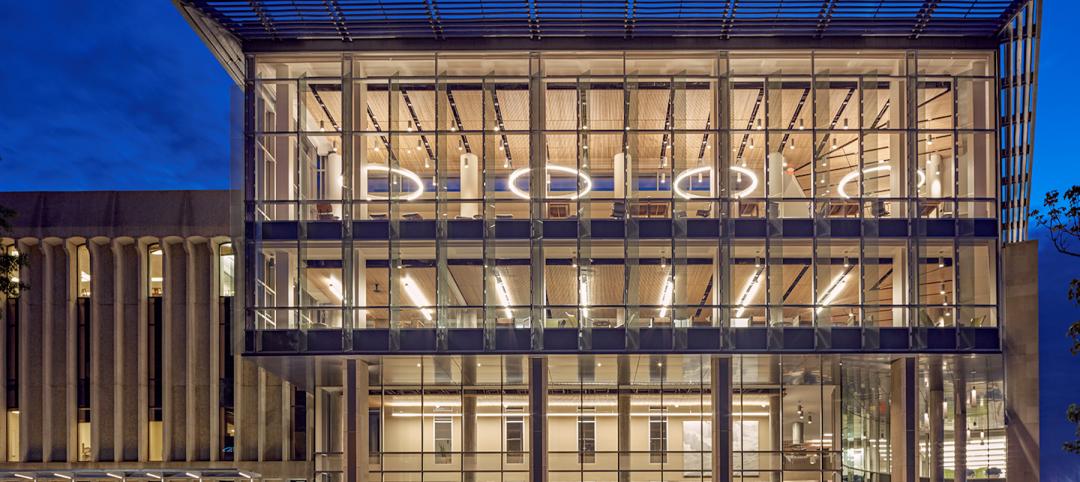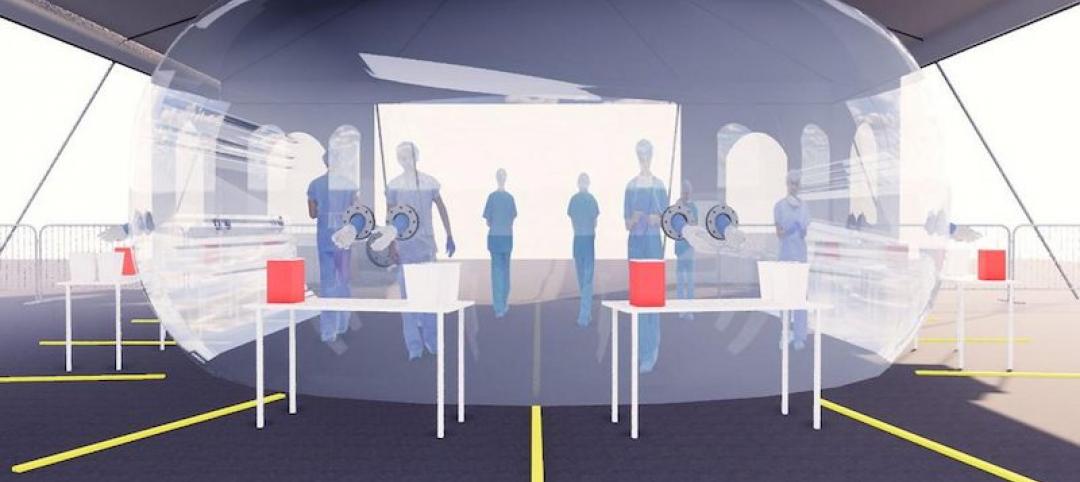Driven by emerging AI developments and digital transformation in the business world, university computer science programs are projected to grow by nearly 15% by 2030. These programs serve both the underlying basic computing research, along with applied computing degrees at both the graduate and undergraduate level.
Through our design with Computer Science programs, we have found that numerous collaboration spaces are critical for successful growth and have identified key ratios of collaboration space types that are required to provide an effective department.
Collaboration analysis
Over the last few years, Shepley Bulfinch has been working on a renovation and addition at a prominent university that will serve as a vibrant and interdisciplinary hub for computational research and education. The facility will promote collaboration, interaction, and community. To inform the planning strategy on this project, we examined peer universities’ computer science departments structures and workflows.
Our analysis revealed some “rule of thumb” ratios for collaboration space types.
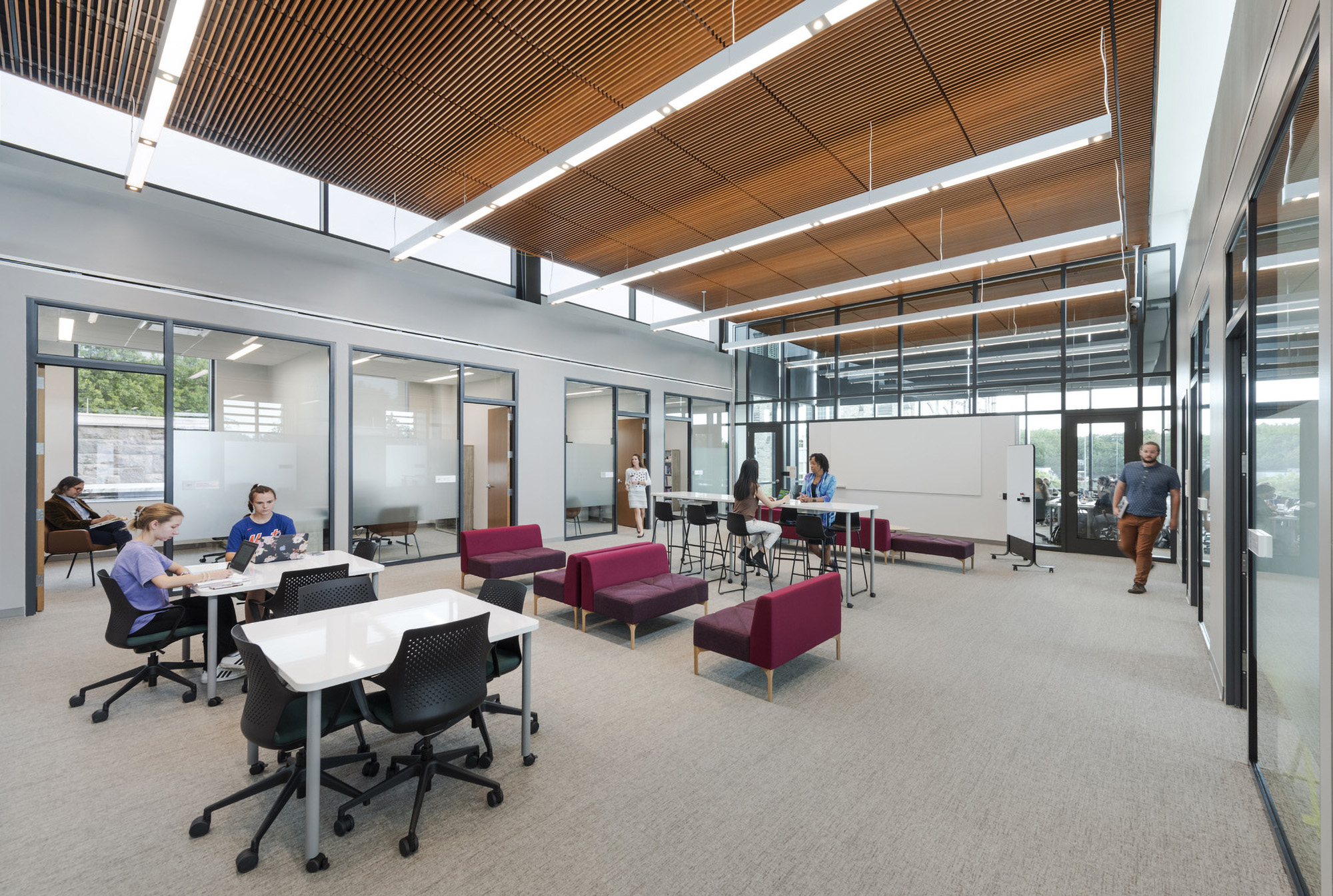
Private faculty offices can be balanced with nearby open and private collaboration spaces for engagement and discussions. Photo courtesy Shepley Bulfinch
From silo tasks to teamwork
We looked at the functions of computer science departments and what activities are most prevalent for both research and teaching groups. While a computer scientist’s work may be independent, we learned that team members need interactive areas where they can discuss and analyze their work as a group.
The essential spaces in computer science buildings include:
- Faculty offices: Including guest seating for conversations with visitors
- Workstations: Semiprivate seating with large screens for graduate students and support staff
- Semiprivate collaboration: More structured seating (tables and chairs) adjacent to assigned workstations and offices
- Open collaboration: More casual shared seating with whiteboards for groups of two to eight people in public areas with lobbies and corridors
- Private collaboration: Enclosed conference/meeting rooms
- Phone rooms: Small, enclosed rooms for one or two individuals with acoustic privacy
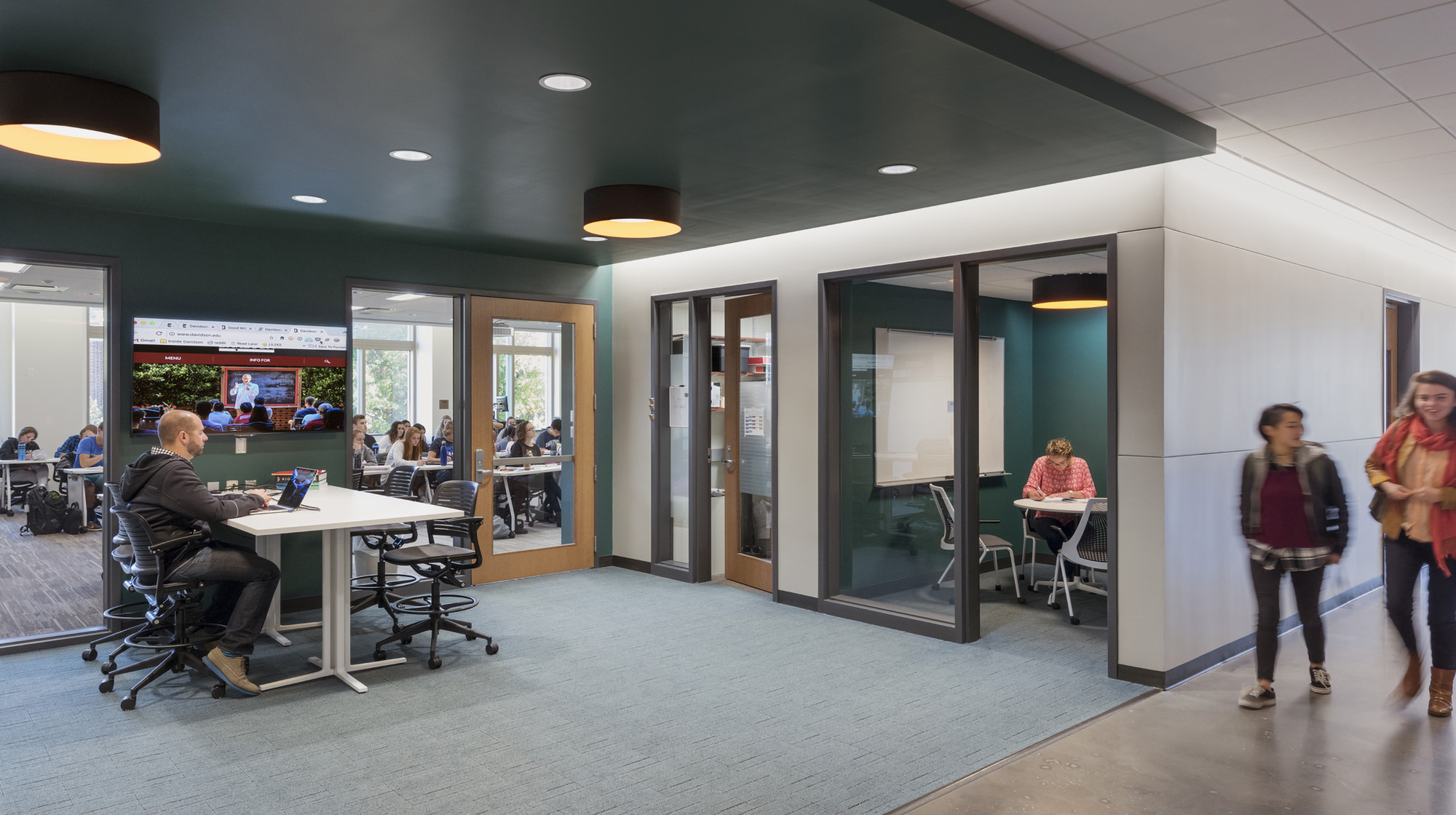
Private collaboration spaces can offer a destination for faculty and students to meet before or after class to continue discussions and get more in-depth on research topics. Photo courtesy Shepley Bulfinch
Our fundamental takeaway is that every team member needs a collaboration space, regardless of working individually or in a team. Our collaboration analysis proposes the following ratios:
- 4:1 workplace seat per collaboration space
- 1:1 workplace seat per collaboration seat
- 2:1 workplace seats per open or semi private collaboration seat
- 3:1 workspace seats per private collaboration seats
- 7:1 workstation seat per phone room seat
- 20:1 workstations per phone rooms
As a discipline that serves multiple functions, computer science spaces need to support both ideation and social interaction. By using these benchmark ratios, computer science programs can begin the planning process for collaborative spaces.

The 1:1 workplace seat per collaboration seat offers opportunities for users to engage in discussion or collaborative work in different settings and styles throughout the day or project lifecycle. Photo courtesy Shepley Bulfinch
More from Author
Shepley Bulfinch | Jul 11, 2024
3 considerations for designing healthy, adaptable student dining
Amanda Vigneau, IIDA, NCDIQ, LEED ID+C, Director, Shepley Bulfinch, shares three ways student dining facilities have evolved to match changes in student life.
Shepley Bulfinch | Nov 27, 2023
7 ways multifamily designers can promote wellness in urban communities
Shepley Bulfinch's Natalie Shutt-Banks, AIA, identifies design elements that multifamily developers can use to maximize space while creating a positive impact on residents and the planet
Shepley Bulfinch | Jul 6, 2023
The responsibility of adapting historic university buildings
Shepley Bulfinch's David Whitehill, AIA, believes the adaptive reuse of historic university buildings is not a matter of sentimentality but of practicality, progress, and preservation.
Shepley Bulfinch | Jun 2, 2023
Designing a pedestrian-focused city in downtown Phoenix
What makes a city walkable? Shepley Bulfinch's Omar Bailey, AIA, LEED AP, NOMA, believes pedestrian focused cities benefit most when they're not only easy to navigate, but also create spaces where people can live, work, and play.
Shepley Bulfinch | Apr 5, 2023
Carole Wedge, former Shepley Bulfinch President and CEO, retires after 37 years
Wedge’s 37-year career at Shepley Bulfinch evolved a historic firm into a national design practice.
Shepley Bulfinch | Aug 8, 2022
The technology balancing act
As our world reopens from COVID isolation, we are entering back into undefined territory – a form of hybrid existence.
Shepley Bulfinch | Jul 26, 2022
Better design with a “brain break”
During the design process, there aren’t necessarily opportunities to implement “brain breaks,” brief moments to take a purposeful pause from the task at hand and refocus before returning to work.
Shepley Bulfinch | Jul 11, 2022
Student life design impacts campus wellness
As interior designers, we have the opportunity and responsibility to help students achieve deeper levels of engagement in their learning, social involvement, and personal growth on college campuses.
Shepley Bulfinch | Jun 8, 2022
Welcome to the hybrid library
Libraries have grown to become the intellectual and social hubs of campus, where, prior to March 2020, students, researchers, and faculty gathered to collaborate and connect.
Shepley Bulfinch | Jul 14, 2020
Is there a way to test for Covid-19 without PPE?
We developed a unique design concept: a testing booth that allows healthcare workers to administer tests without using PPE or being exposed.

